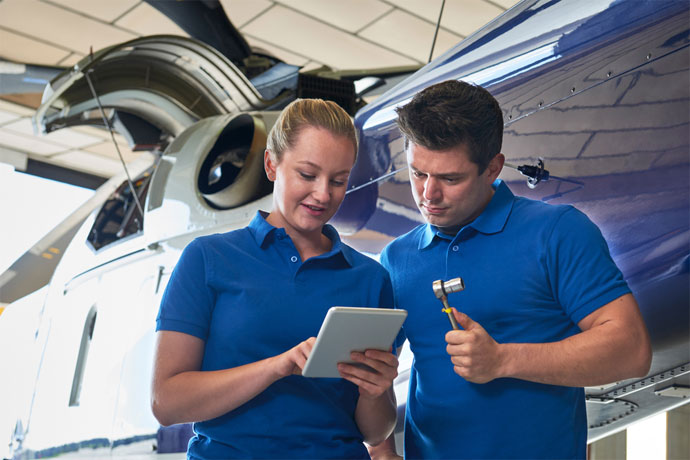Genuine rubber has been in use by humans for thousands of years. Its main properties include water resistance, heat resistance, strength and resiliency. Rubber is an especially important component in aerospace, including aviation and space flight. Synthetic rubber, specifically silicone, has been used in adhesives, seals and heat shields. The refinement and development of different forms of synthetic rubber has made it possible for humans to reach the moon. On the other hand, the failure of rubber elements has lead to tragic results. The precision involved with aviation and space travel require precision, leaving no room for error. Here’s a closer look at how the aerospace industry uses rubber.
Rubber Seals and Fasteners
Airplane travel involves flying at high altitudes where oxygen levels are low and depressurization would make it difficult or impossible for passengers to breathe. Silicone gaskets and grommets for cabin doors and windows are essential for forming airtight seals that maintain air pressure inside the cabin and allow passengers to breathe during the flight.
Similarly, space exploration requires traveling outside of the normal pressurized environment of earth’s atmosphere. In such a harsh environment, maintaining internal pressure and oxygen levels is essential for allowing astronauts to remain alive. Silicone o-rings provide airtight seals that maintain internal pressure and a breathable atmosphere.
Adaptability to Temperature Extremes
Beyond the earth’s atmosphere, temperatures can get as high as 200 degrees Fahrenheit and as low as -200 degrees Fahrenheit. One of the major properties of silicone is its adaptability to temperature extremes. As a result, silicone adhesives have been used to bind seals and provide protective coating surfaces on spacecraft from the earliest voyages to the present. Silicone adhesives are also used for bonding, insulation and other functions associated with sensitive electronic and optical equipment incorporated into spacecraft.
Ability to Prevent Depressurization and Oxygen Depletion
Airplanes and spacecraft are also subjected to pressure extremes. Specifically, without proper adjustments, depressurization would deplete the supply of oxygen inside an aircraft cabin or aboard a spacecraft, making it impossible for passengers or astronauts to breathe, and eventually killing everyone on board. Silicone gaskets and o-rings in aircraft and spacecraft are able to form airtight seals and thereby prevent depressurization and oxygen depletion. As a result, airplane passengers are able to breathe normally while in flight, and sufficient air pressure is maintained inside a spacecraft to allow it to remain intact.
The Consequences of Failure
Space exploration demands close tolerances and precision in measurements and execution. There is literally no room for error. The smallest mistakes can have tragic consequences. Perhaps the best known example of such as failure is associated with the Challenger disaster of January 1986. On the day of liftoff, temperatures were unseasonably cold, so cold that the launch was delayed for hours to allow for de-icing. Subsequent investigation of the disaster revealed failure of both the primary and secondary o-rings that were intended to stop leaks of volatile rocket fuel. Due to the failure of the o-rings, searing hot fuel escaped from the fuel tanks shortly after liftoff. As a result, the Challenger burst into flames and exploded in mid-air, killing all seven astronauts aboard.
Rubber and Silicone in Aerospace Travel and Space Exploration
With its properties of heat resistance, ability to form tight seals and overall resiliency, silicone has long been an essential component in aviation and space exploration. Rubber seals and fasteners, along with other rubber parts must withstand pressure and temperature extremes to function effectively under such harsh conditions. When mistakes occur, the results are often tragic. As a result, absolute accuracy and precision are essential.

